An Easter Typhoon and Galactic Ghosts Are Among These Spacey Visions
Astronauts spy a colossal eye and Hubble sees echoes of quasars past in our picks for the week’s best space images
/https://tf-cmsv2-smithsonianmag-media.s3.amazonaws.com/filer/6a/cc/6acca166-eaa3-4b09-bcd2-9349fd33df86/17011830972_7fcba0b3d8_k.jpg)
Astronauts spy on a super-typhoon, Mars sprouts black-and-white veins, Hubble spots green galaxy ghosts and more in our picks for this week's best space-related images.
...
...
Deep Eye
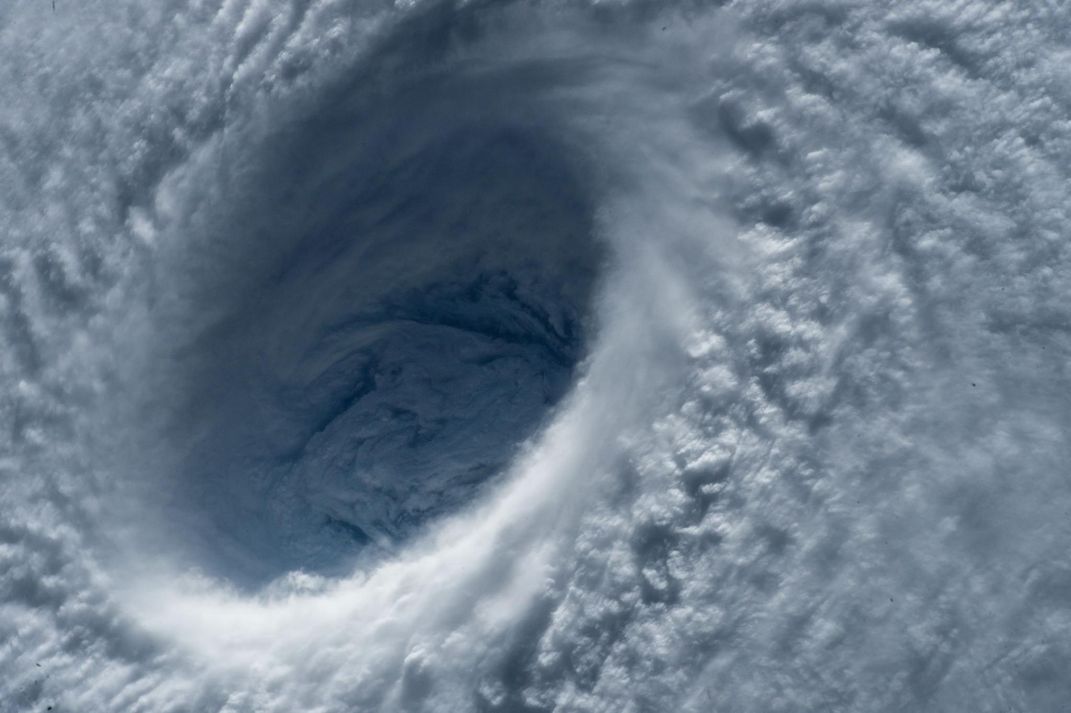
Seen from space, the eye of Typhoon Maysak looks like a sinkhole in the clouds above the Pacific Ocean. This image, taken by astronauts aboard the International Space Station, was snapped on March 31 while Maysak was a Category 5 storm. As of April 2, the super-typhoon had crossed the Federated States of Micronesia, where it caused five deaths, ruined crops and contaminated water supplies, according to the Sydney Morning Herald. A slightly weakened but still menacing Maysak is expected to make landfall in the Philippines over the Easter holiday weekend.
Martian Veins
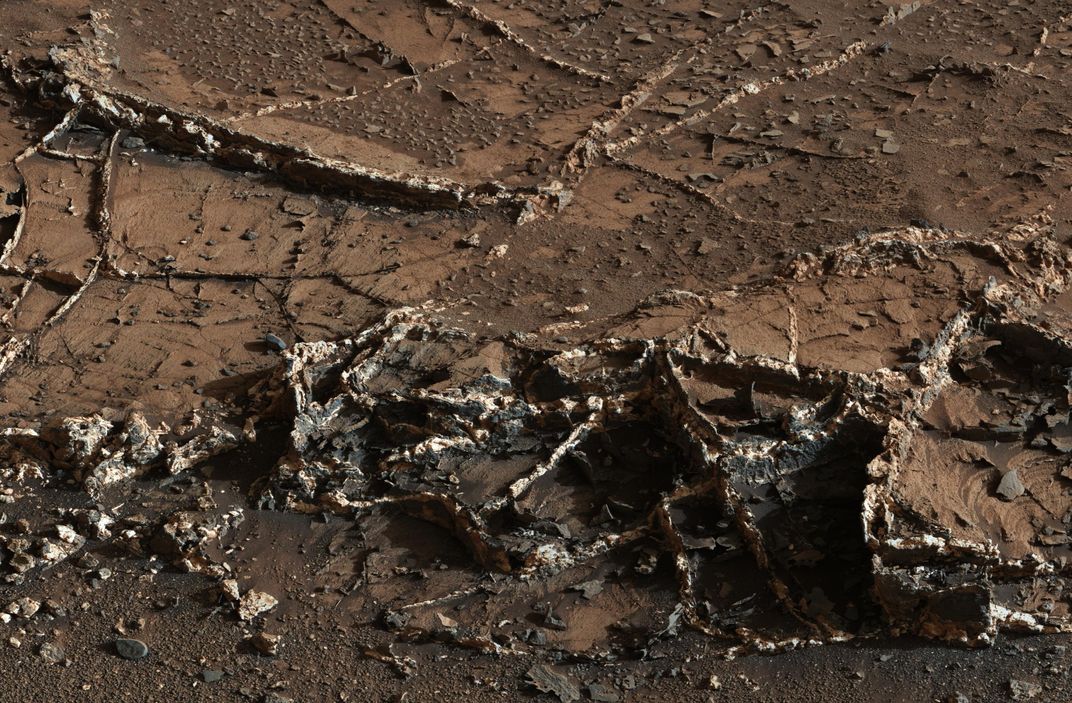
Veins of mineral deposits jut out of the Martian surface in an area nicknamed Garden City in this recently released mosaic panorama from the Mars rover Curiosity. The two-toned veins are made of layers of light and dark material, some stacked together like ice-cream sandwiches, according to rover science team member Linda Kah. On Earth, such veins form when fluids flow through cracks in rock, leaving behind mineral deposits. The multi-hued nature of the Martian veins suggests that different types of fluids moved through the cracks at different points in time, so studying them could reveal more about the red planet's watery past.
Galaxy Ghosts
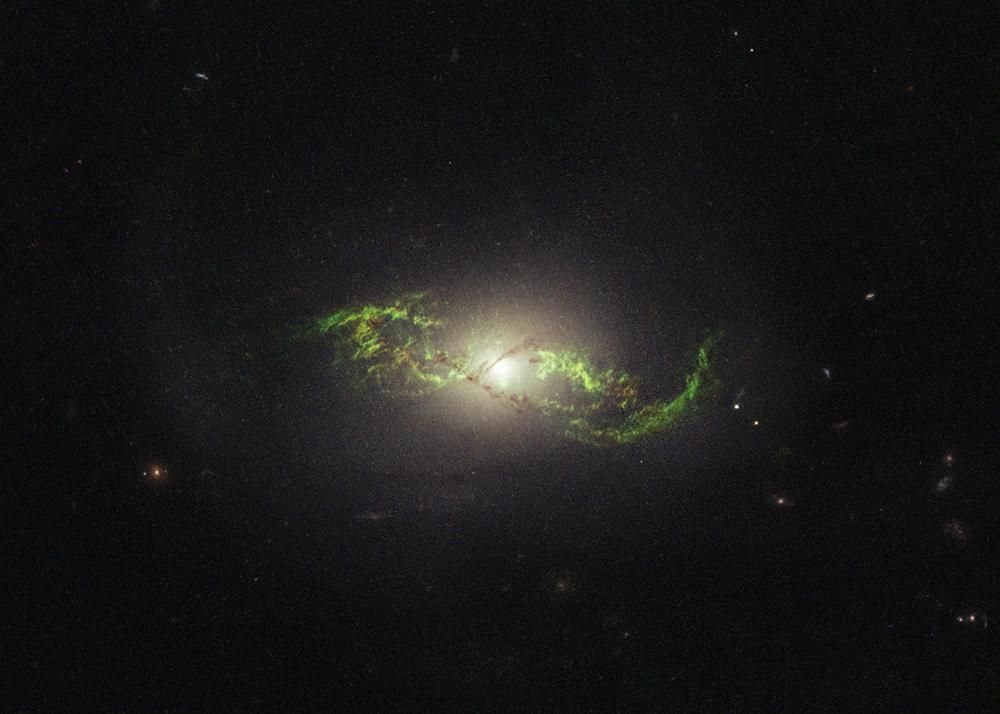
Glowing green tendrils surround the galaxy known as NGC 5972—one of several galaxies recently shown to be haunted by the ghosts of their past meals. Images from the Hubble Space Telescope released on April 2 show similar loops and braids surrounding eight galaxies classified as quasars. These cosmic objects have supermassive black holes in their centers that are actively feeding on infalling matter, which gets so compressed and heated that it sends out bright radiation. Astronomers think the green wisps orbit quasars that used to be much more powerful, so that their beams of radiation charged up the distant filaments and made them glow. These quasars have since quieted down, but the green structures remain, serving as echoes of their former glory.
Cosmic Cat's Paw
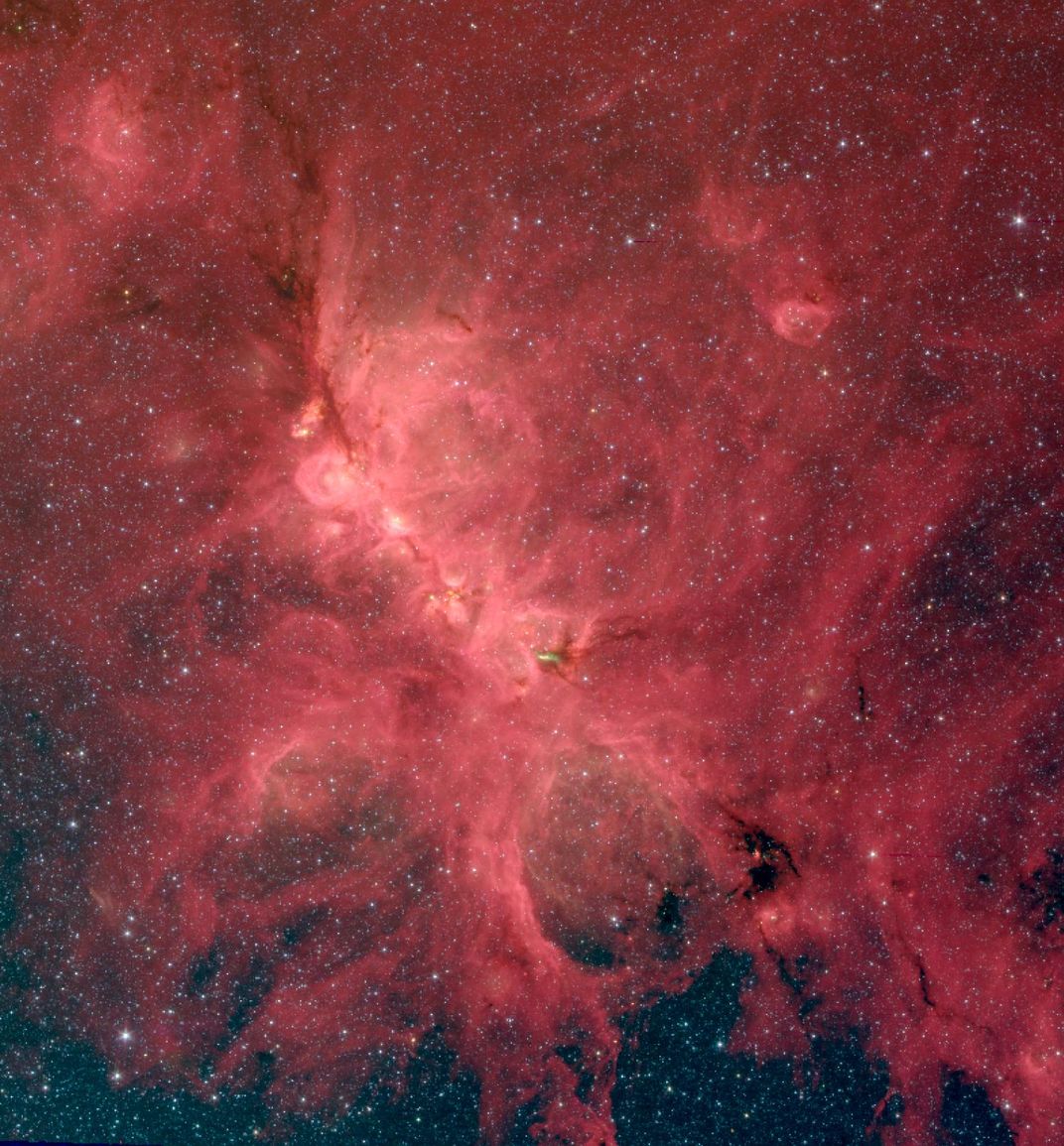
Gravity is usually the main player in the story of star birth: cool clouds of dust and gas collapse under their own weight and spark stellar formation. But new research from the Harvard-Smithsonian Center for Astrophysics suggests magnetism also has a crucial supporting role. Using multiple observatories, the team examined dust in the Cat's Paw Nebula, a rich cloud of star-forming material about 5,500 light-years away. Since dust aligns with magnetic fields, the team could trace magnetic orientation in the nebula and get a sense of how it influences star birth at multiple scales. Their work, described online this week in Nature, shows that magnetism is involved in many stages, from shaping star-forming nebulae to regulating the material available for individual stars to blossom.
Gassy Babies
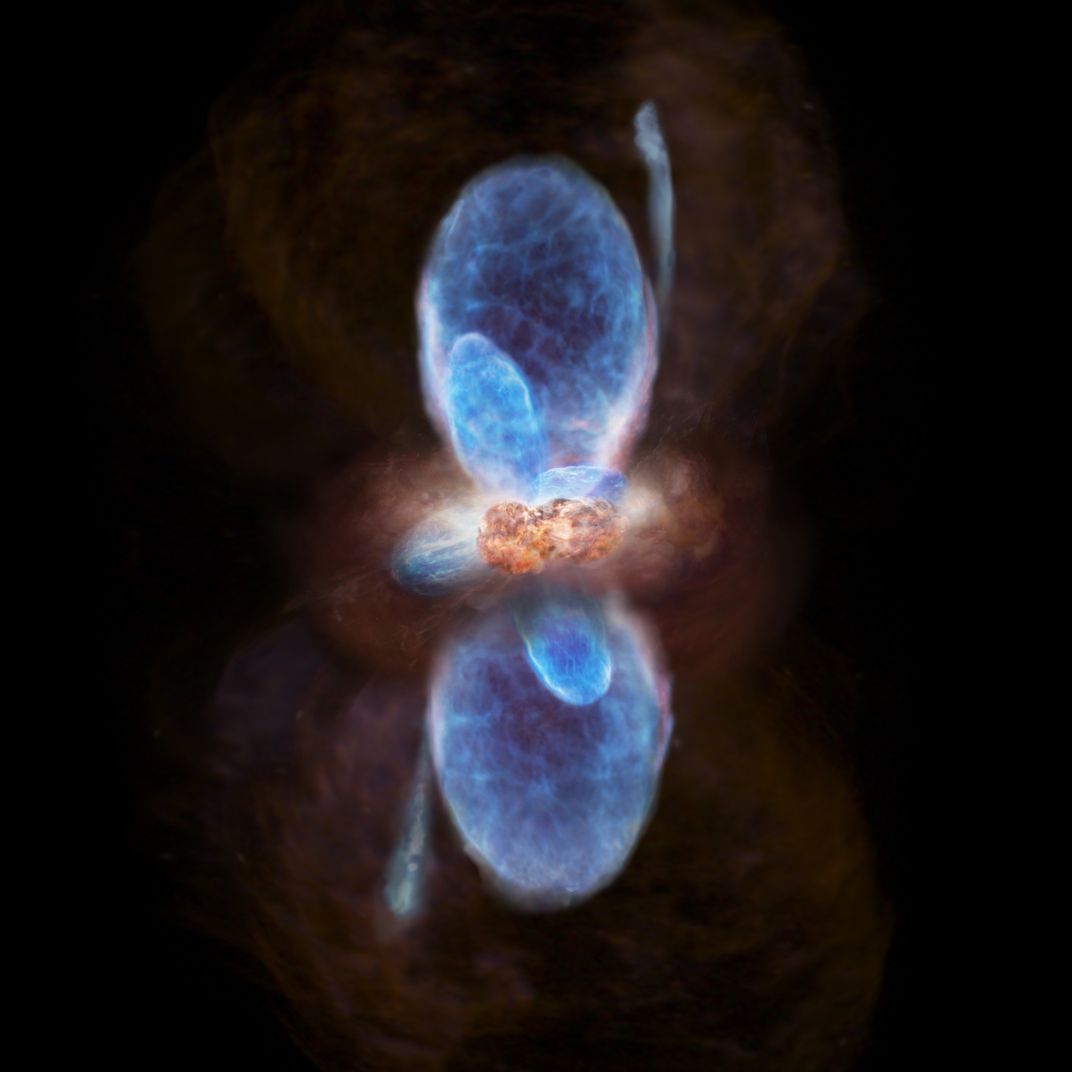
This artist's illustration shows baby stars blowing bubbles as they might look to the human eye in the star-forming region known as IRAS 16547-4247. Astronomers using the Atacama Large Millimeter/submillimeter Array (ALMA) in Chile spotted the multiple gas outflows in radio data, which indicates that a cluster of high-mass stars is being born in the region. The births of very massive stars have been harder to study, because these stars form in shrouded clusters and are usually farther from Earth than their low-mass cousins, making it difficult to tease out details. But the recently completed ALMA observatory has better resolution than its predecessors, giving astronomers finer views of these kinds of complex systems.
Snow Trouble
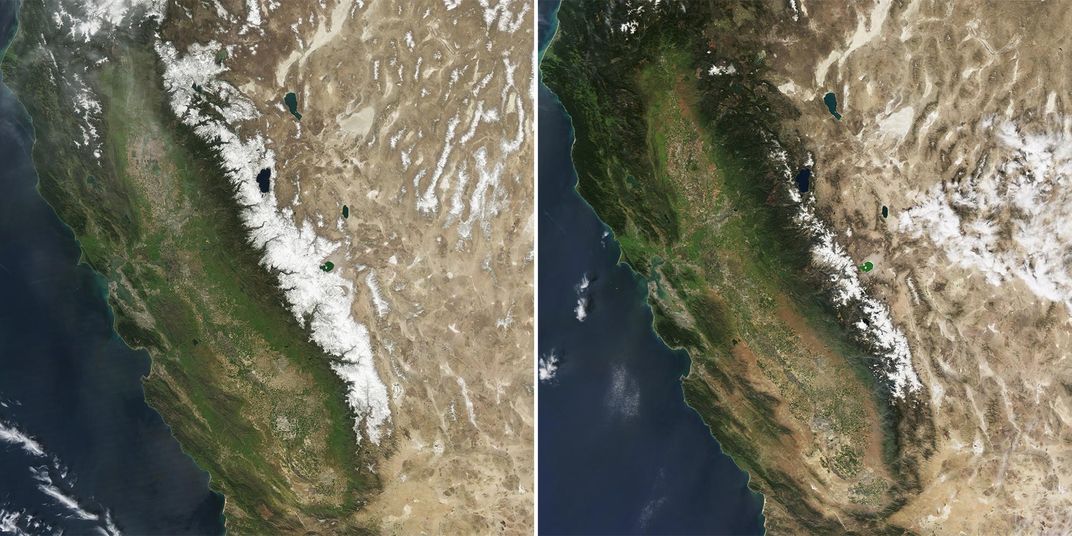
In the arid U.S. West, snowfall in the mountains acts like a freshwater savings account—melting snow trickles down the slopes to replenish rivers and reservoirs. But in California, troubles caused by ongoing drought are being compounded by a severe lack of snow in the Sierra Nevada mountains. Images from NASA's Aqua satellite show the drastic reduction in snowfall between 2010, the last year that saw average winter snowfall, and 2015. Data from NASA’s Airborne Snow Observatory show that the Tuolumne River Basin, which supplies water to San Francisco and its surrounding neighborhoods, contained only 40 percent of the water content the same region held in 2014, which was already one of the driest years in California's recorded history.